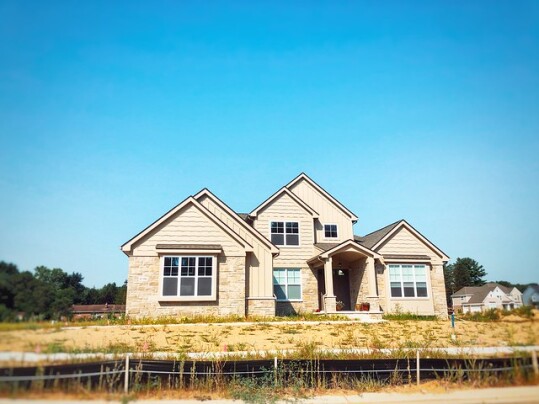There’s increasing evidence that we may have already past the housing market’s low point. Recent data shows mortgage rates falling and buyer activity rising as we approach the spring home-buying season. The latest evidence is the National Association of Realtors’ Pending Home Sales Index. The Index – which measures the number of contracts to buy homes signed during the month – showed a 2.5 percent improvement in December over the month before. It was the first increase following six months of declines. Lawrence Yun, NAR’s chief economist, says the market is stabilizing. “This recent low point in home sales activity is likely over,” Yun said. “Mortgage rates are the dominant factor driving home sales, and recent declines in rates are clearly helping to stabilize the market.” Regionally, index results were mixed, with the West and South showing significant improvement, while the Northeast and Midwest still saw falling contract activity. (source)
Archive for January 2023
Contracts To Buy End Six Month Streak
New Home Sales Increase 2.3% In December
New home construction is an important part of balancing the housing market. When inventory is low and prices are rising, building more new homes can help level the imbalance and provide better affordability conditions for buyers of all types of homes. But builders don’t build more homes unless there are interested buyers. That’s why keeping an eye on new home sales can help buyers get a feel for what’s happening in the overall market. If new home sales are rising, builders are more likely to build more homes, which helps inventory and ultimately home buyers. So what’s happening now in the new home market? Well, according to the latest numbers released by the U.S. Census Bureau and the Department of Housing and Urban Development, new home sales rose 2.3 percent in December, matching economists’ expectations for the month. But while the month-over-month improvement is encouraging, sales are still down significantly from year-before levels, mostly due to the increase in mortgage rates that slowed buyer demand last year. (source)
Home Seller Tenure Remains Near 10-Year Low
Buying a house isn’t a short-term living arrangement. Typically, if you’re buying, you’re planning to stay a while. But how long should home buyers expect to live in the house they purchase? Well, conventional wisdom says you should expect to live in the house you buy for at least five years. Recently, though, Americans have been staying in their homes longer before selling and moving somewhere new. In fact, between 2019 and 2021, the typical homeownership tenure was cited as being somewhere between eight and 13 years. For comparison, in the early 2000s, it got as low as four and a half years. These days, it’s getting shorter again. In fact, according to ATTOM Data Solutions, home sellers who sold during the fourth quarter of 2022 had owned their homes an average of 5.85 years. That’s the third shortest tenure since 2012 and represents a growing trend, with a majority of metro areas showing tenures down. (source)
Mortgage Rates Decline For Third Straight Week
According to the Mortgage Bankers Association’s Weekly Applications Survey, average mortgage rates fell last week from one week earlier. Rates were down for 30-year fixed-rate loans with both conforming and jumbo balances, loans backed by the Federal Housing Administration, and 15-year fixed-rate loans. Joel Kan, MBA’s vice president and deputy chief economist, says rates have been trending downward lately. “Mortgage rates declined for the third straight week, which is good news for potential home buyers looking ahead to the spring home buying season,” Kan said. “Home buying activity remains tepid, but if rates continue to fall and home prices cool further, we expect to see potential buyers come back into the market. Many have been waiting for affordability challenges to subside.” Last week, demand for loans to buy homes was up 3 percent from the week before. The MBA’s weekly survey has been conducted since 1990 and covers 75 percent of all retail residential mortgage applications. (source)
Millennial Buyers Plan For Smaller Down Payments
Saving enough money for a down payment can be a hurdle for some home buyers, especially first-time buyers. After all, unlike move-up buyers who can use the proceeds of their previous home’s sale, first-time buyers have to come up with a down payment largely through savings. But saving money’s not always easy. In fact, among recently surveyed millennial home buyers, 41 percent said saving for a down payment was the biggest barrier to buying a home – only mortgage rates and home prices ranked higher. The good news, though, is you don’t have to have a 20 percent down payment saved before you can buy a house. And, according to the survey, most younger buyers won’t. The survey found 62 percent of respondents said they plan to have a smaller down payment when they buy. That’s a big change from last year, when just 34 percent of millennial buyers planned to put down less than 20 percent. (source)
Housing Market’s Rebound Tied To Fed
Each month, Fannie Mae’s Economic and Strategic Research Group releases an outlook detailing what it thinks is ahead for the economy and housing market. The forecast covers the group’s expectations for economic growth, home sales, prices, mortgage rates, and other economic factors. According to the most recent release, the group sees a rebound ahead for the housing market but can’t say for sure when it’ll begin. That’s largely due to the fact that where mortgage rates go from here is dependent on the Federal Reserve. The Fed began raising interest rates in 2022 to fight inflation. Doug Duncan, Fannie Mae’s senior vice president and chief economist, says there’s some speculation that the Fed will slow those efforts during the second half of this year. “The market sees the Federal Reserve easing in the second half of the year, which can be interpreted either as a view that the recession is forthcoming or that the slowdown in inflation will lead to a less restrictive monetary posture,” Duncan said. “If the latter occurs, the lower accompanying rates will likely set the stage for a pickup in housing activity going into 2024.” (source)
Home Sales Slow But Will Pick Up Again Soon
Sales of previously owned homes slipped 1.5 percent in December, according to newly released numbers from the National Association of Realtors. The decline is the 11th consecutive monthly decrease and puts sales 34 percent lower than where they were at the same time one year earlier. But while home sales have obviously suffered during a period of rising mortgage rates and high home prices, Lawrence Yun, NAR’s chief economist, expects things will pick up soon. “December was another difficult month for buyers, who continue to face limited inventory and high mortgage rates,” Yun said. “However, expect sales to pick up again soon since mortgage rates have markedly declined after peaking late last year.” In addition to lower rates, home price increases have also slowed, with the median existing-home price up just 2.3 percent year-over-year. That means improved affordability conditions for buyers as the spring home-buying season approaches, which could mean brighter days – and more sales – ahead. (source)







